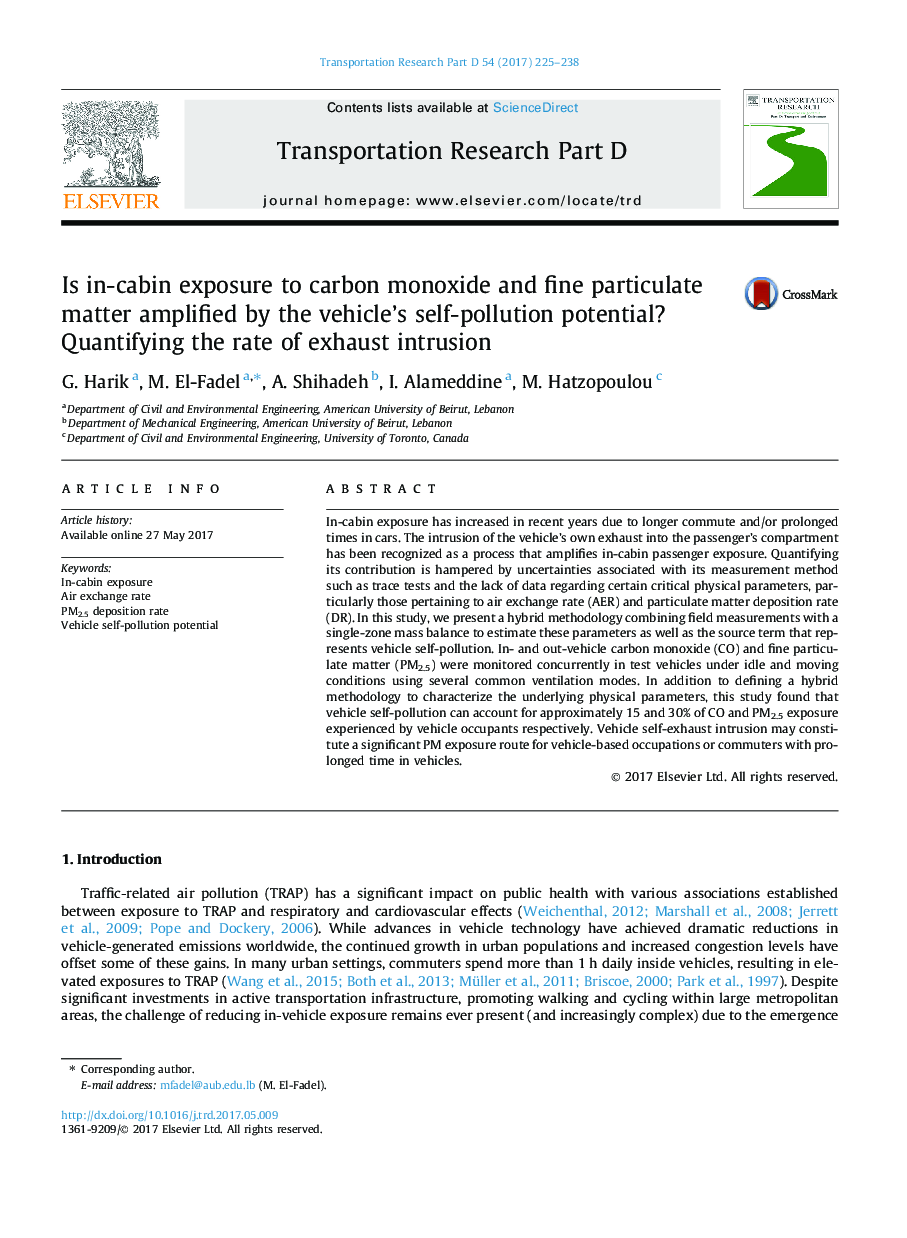| Article ID | Journal | Published Year | Pages | File Type |
|---|---|---|---|---|
| 5119230 | Transportation Research Part D: Transport and Environment | 2017 | 14 Pages |
â¢Demonstrating a hybrid methodology to quantify in-vehicle self-pollution.â¢Vehicle self-pollution contributed to 15 and 30% of CO and PM2.5 in-cabin exposure.â¢Generalization can only be made by increasing the sample size of tested vehicles.â¢Determinants of self-pollution include car make, age, power and weather parameters.
In-cabin exposure has increased in recent years due to longer commute and/or prolonged times in cars. The intrusion of the vehicle's own exhaust into the passenger's compartment has been recognized as a process that amplifies in-cabin passenger exposure. Quantifying its contribution is hampered by uncertainties associated with its measurement method such as trace tests and the lack of data regarding certain critical physical parameters, particularly those pertaining to air exchange rate (AER) and particulate matter deposition rate (DR). In this study, we present a hybrid methodology combining field measurements with a single-zone mass balance to estimate these parameters as well as the source term that represents vehicle self-pollution. In- and out-vehicle carbon monoxide (CO) and fine particulate matter (PM2.5) were monitored concurrently in test vehicles under idle and moving conditions using several common ventilation modes. In addition to defining a hybrid methodology to characterize the underlying physical parameters, this study found that vehicle self-pollution can account for approximately 15 and 30% of CO and PM2.5 exposure experienced by vehicle occupants respectively. Vehicle self-exhaust intrusion may constitute a significant PM exposure route for vehicle-based occupations or commuters with prolonged time in vehicles.
Graphical abstractDownload high-res image (71KB)Download full-size image
